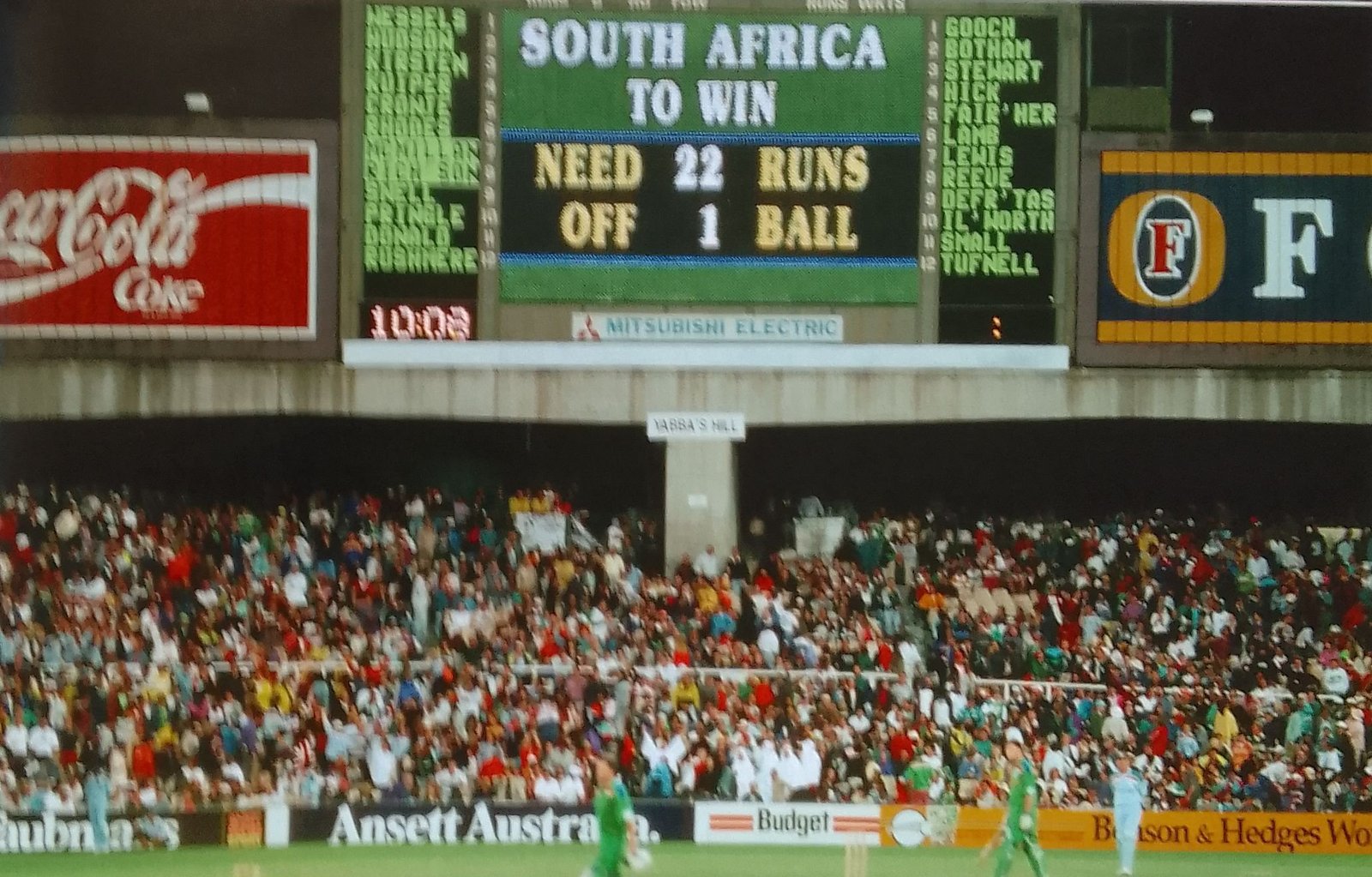Of course, South African cricket lovers still have bitter memories of Benson & Hedges World Cup 1992 Semi-Final SA vs Eng in Sydney. Rain rule clouds England’s joys as South Africa misses World Cup 1992 final place at MCG.
England’s entry into their second successive World Cup final, the reward for their 19- run win over South Africa in Sydney. It was achieved in circumstances of confusion sadly unworthy of so momentous an event. South Africa’s outside chance of winning was ended by a mischievously timed shower and the already discredited rules relating to rain interruptions.
It took the gilt off England’s gingerbread and ruined what was developing into a thrilling climax, with the odds still favoring the fielding side. As the rain arrived, however, Brian McMillan and Dave Richardson had scored 10 off five balls from the 43rd over. South Africa, having made a brave assault on England’s total of 252 for six off 45 overs. They just needed 22 to win off 13 balls with four wickets left when the umpires decided it was raining hard enough for them to intervene.
Deeming the conditions unfit, umpires Steve Randell and Brian Aldridge, who conducted themselves very well in difficult circumstances, asked Graham Gooch if he wanted to carry on. He, understandably, did not. Twelve minutes were lost before the umpires decided that play could resume, meaning that two over’s had to be taken off — in other words, only one ball remained.
South Africa’s two lowest-scoring Over had produced only one leg-bye, so their target was reduced by one, to 21 off one ball. A disgruntled Brian McMillan scored one off it and handshakes all around followed. There was nothing wrong with the spirit in which the game was played.
The truth is that the D/L method is by far the fairest system yet devised, even if it goes beyond the realm of mental arithmetic. While previous systems loaded the dice too heavily in favor of one side or the other, D/L bases its calculations on the idea that each side, at any given point in its one-day innings, has two sets of resources available: wickets and overs.
From there are stems an infinite number of possible combinations, each of them checkable on a handy chart. Examples can be provided on a stamped addressed envelope containing a large blank cheque. Suffice it to say, the system works.
